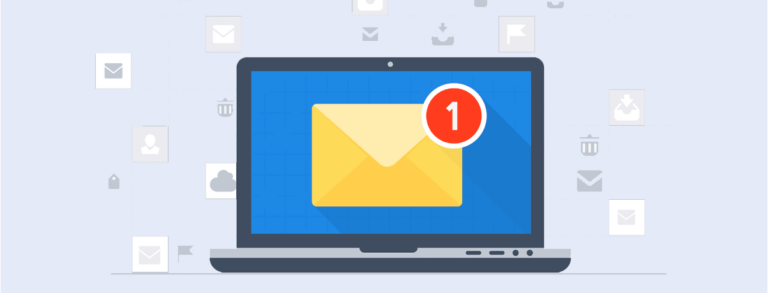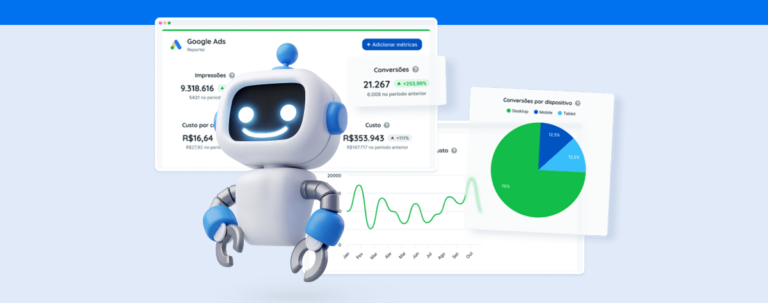Discover the benefits of email marketing and 6 tips to launch the best campaigns
Time and again, doubts are raised about the efficiency of email marketing in digital strategies. Does this type of content really work? Do people still read emails, or have they become an obsolete communication channel?
If you’re one of those questioning, know that the answer is: yes, email marketing is relevant and can become a powerful tool for engaging with your audience, provided you know how and when to use it.
Therefore, we’ve prepared this article to share all the benefits of working with this channel and to deliver six tips to make your campaigns more efficient. Check it out!
Why is email marketing still important?
According to the State of Marketing survey, conducted by Hubspot with over 1,500 marketing professionals worldwide, 77% of participants claimed to have observed increased engagement with email marketing campaigns in 2021 compared to 2020.
In other words, despite annual claims that the era of email blasts is coming to an end, consumer behavior seems to indicate the opposite, showing a greater adoption of this channel.
This makes sense when we consider that emails are part of the life of anyone online, used not only for sending messages but also for logging into social networks, registering in stores, buying tickets for shows or movies, and much more!
But if you think it’s enough to just send out content to reach and engage your audience, think again.
Email marketing continues to be successful because, now more than ever, brands are focused on producing personalized messages, segmenting their audience well, and using marketing automation to optimize the process.
Thus, they can deliver the right content at the right time, developing lasting relationships with leads.
Benefits of email marketing for your strategy
Still doubting whether emails work and what they can bring to the digital evolution of brands? Then check out our list below with the main benefits of this channel:
- Greater reach: as you build your lead base, you expand the opportunities to get closer and interact with your audience;
- Relationship: whether with prospects who have not yet made a purchase or with a customer, building a relationship is fundamental to strengthening trust in the brand, demonstrating your authority in your sector, and eventually, fostering loyalty;
- Segmentation: with email marketing, you can work with segmentations divided by the interests of leads, ensuring the right message reaches the right person;
- Personalization: using a good tool, it’s also possible to create personalized messages with a more personal tone, where the lead is addressed by name and receives content genuinely aimed at solving their problems;
- Marketing automation: software use also allows you to automate email sends and create flows that follow the customer journey, optimizing the process and the blasts;
- Increased sales: as a consequence of strategic email marketing blasts, the company has a much better chance of increasing sales, given that the relationship has already been developed and trust bonds strengthened;
- Results analysis: with the support of an email marketing tool, you have access to key results, which helps to understand what is really working and when your strategy needs to be redefined.
6 tips to enhance your email marketing campaigns
Now that you know how a good email marketing strategy can be positive for generating relationships and more sales, it’s time to check out our 6 tips to make your campaigns a huge success. Let’s get started?
Know the customer journey well
As previously mentioned, email blasts should not be sent haphazardly, without considering the stage your persona is in.
Therefore, it’s very important that, before anything else, you define how your content can help at each stage of the customer journey, making it easier for them to move down the sales funnel. To recap, this journey is divided into four phases:
- Awareness and discovery: when the person is not yet aware they have a problem but is starting to engage with topics related to your sector;
- Problem recognition: when they realize they need to overcome a challenge and begin searching for ways to do so;
- Solution consideration: the persona compares solutions and brands available in the market before making a choice;
- Purchase decision: the person is ready to make a decision and do business with the company that offers the best product or service for their problem.
Focus on content quality
Besides defining the purchase journey stages well, you should think about the quality of the content you’ll send to your segments, always respecting their current stage and interests.
More than just thinking about which topics and information to cover, it’s worth also bringing personalization into your messages.
Adding variables to the text (person’s first name, company, among others), creating compelling titles, and developing a good design are ways to make emails creative and attractive to your audience.
Use a good automation tool
By utilizing an automation tool, you expand your possibilities of keeping the relationship with your leads always active, as you can configure email flows according to each stage of the purchase journey.
This way, your team spends less time on repetitive tasks, and the nurturing process becomes more optimized, without neglecting personalization and content quality.
Create mobile-friendly emails
As people increasingly use mobile devices to engage online and consume content, it’s essential that the emails they receive are optimized for these devices.
Consider how design and text blocks can facilitate reading, in addition to making the message more objective and attractive.
Furthermore, think about how to continue the experience after the email marketing. If the CTA leads to your website, will the pages also be responsive? Would directing the contact to WhatsApp generate a conversation more easily, or would it be better to encourage a registration on the site?
Conduct A/B tests
A/B testing is a strategy widely used in digital marketing to understand how the audience behaves in response to different stimuli.
Thus, it proposes conducting a test with similar content, where one variable is changed to observe which version performs better with the audience.
In the case of email marketing, this means conducting an A/B test with different titles, CTAs, images or videos, texts, colors, among other elements that can be utilized. However, for a better evaluation of the result, it’s important not to change more than one variable at a time.
Monitor results and gain insights
Monitoring email marketing metrics is essential to discover the performance of each blast, which strategies are working better, and what needs to be adjusted for the future.
Without this analysis, you’re in the dark about how your relationship with your leads is going and whether they’re truly engaging with the content.
Many tools, therefore, provide data such as delivery rates, open rates, clicks, spam markings, and bounces, so marketing professionals can recalibrate their strategies based on what has already been produced and sent.
But if you want to make this process even faster and more practical, you can also rely on Reportei’s reporting generation.
Today, our tool integrates with RD Station and Mailchimp, allowing you to import key metrics in just 3 seconds, making your analysis and communication with your client/decision-maker much simpler.





